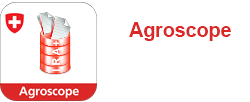The environmental impacts of nutrition can be reduced at both the production and consumption stages. We investigated how a diet associated with the lowest possible environmental impacts might look like for the Swiss population. The DSS-ESSA model system, built to simulate the Swiss food supply including imports and exports, was extended by including detailed nutritional requirements and LCA indicators for environmental impacts. The environmental impacts of the diet could be reduced by over 50% in the optimized scenarios, mainly by reducing feed imports, food imports and animal production impacts. The composition of the average diet would change significantly: drop in the proportion of meat (-70%) and larger proportions of grains or potatoes (+35%) as well as legumes including peanuts (20% of protein supply), whilst milk consumption levels would remain constant. The environmental impacts of nutrition can be reduced at both the production and consumption stages. We investigated how a diet associated with the lowest possible environmental impacts might look like for the Swiss population. The DSS-ESSA model system, built to simulate the Swiss food supply including imports and exports, was extended by including detailed nutritional requirements and LCA indicators for environmental impacts. The environmental impacts of the diet could be reduced by over 50% in the optimized scenarios, mainly by reducing feed imports, food imports and animal production impacts. The composition of the average diet would change significantly: drop in the proportion of meat (-70%) and larger proportions of grains or potatoes (+35%) as well as legumes including peanuts (20% of protein supply), whilst milk consumption levels would remain constant.
Nemecek T., Zimmermann A., Waldvogel T.
How to supply food for the Swiss population in an environmentally optimal way by using domestic production resources best?
In: 11th International Conference on Life Cycle Assessment of Food (LCA Food). 17-19 October, Bangkok, Thailand. 2018, 313-316.
Download english (490 kB)
Publication-ID (Web Code): 40151 Sending by e-mail










